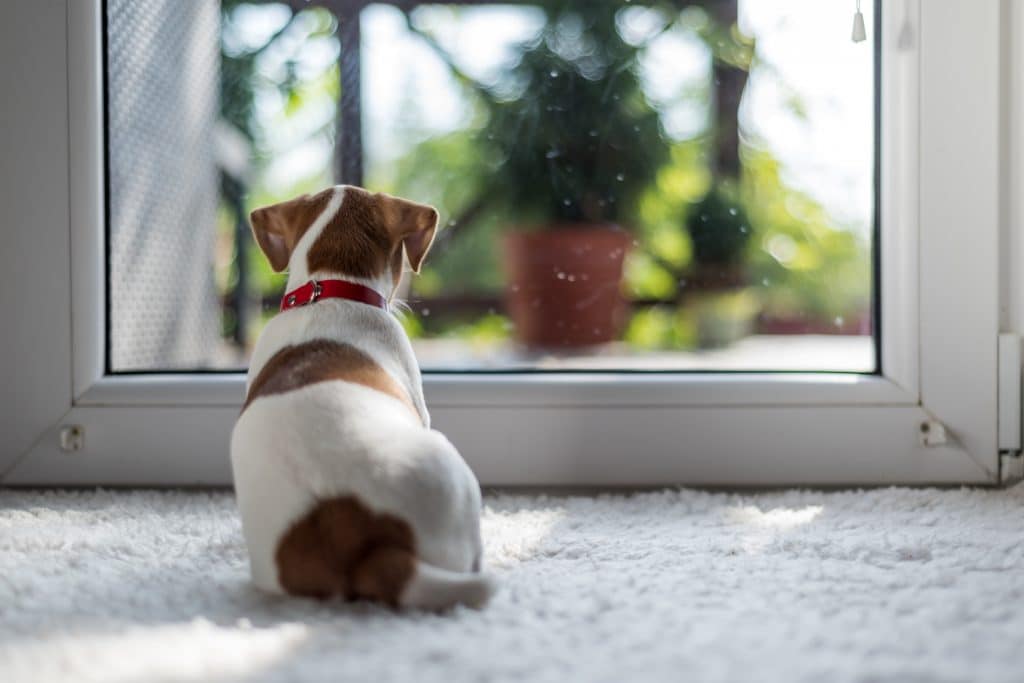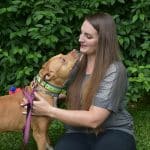Bringing a new dog into my life was one of the most exciting days. My Pit Bull is a rescue, so she developed separation anxiety within a few days of bringing her home. This was a first for me. So, I began doing research on separation anxiety in dogs.
What do you need to know when your new furry friend panics every time you leave the house? I hate the guilty feeling I get because she doesn’t have the confidence to be home alone for an hour.
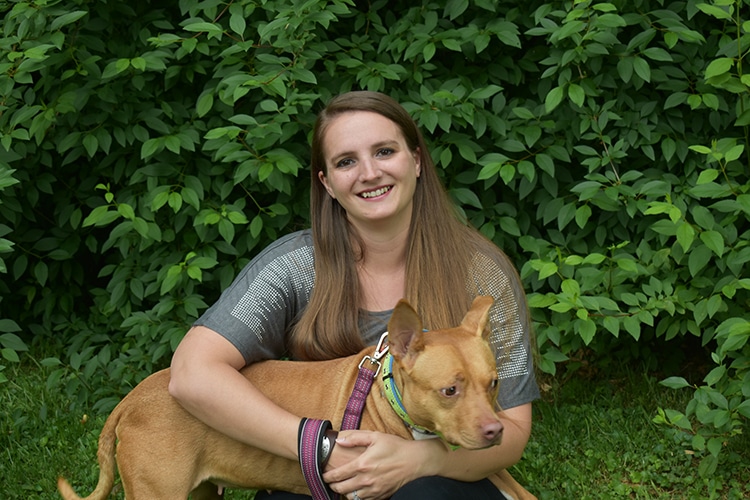
What is Separation Anxiety in Dogs?
PetMD defines separation anxiety in dogs as:
“destructive or otherwise inappropriate behavior when an owner leaves the pet or is not in close proximity to it.”Basically, your fur-baby relies on you very heavily for guidance and approval and, unfortunately, doesn’t have the confidence to relax without you. You take such good care of your pup that he doesn’t know how to be a dog (or doesn’t realize he’s capable of being a dog) without you by his side.
Separation anxiety is pretty common in dogs because they rely on us for all of their care and entertainment. It’s even more common in rescue dogs because they’re coming out of a rough life and they finally found a human who gives them unconditional care. Now they never want to leave your side. It’s endearing, but can become problematic.
The degree of separation anxiety varies from doggy to doggy. Some might cry or bark when you leave them home alone. Others might defecate or urinate in the house while yet other dogs will chew and destroy furniture, toys, shoes, and other inappropriate objects.
Common Symptoms of Separation Anxiety
If you’re lucky, your dog will only cry, bark, or howl when you leave the house or the room. Dealing with separation anxiety will take a little more work if your dog defecates or urinates in the house or if he chews on things when you leave.
Let’s look at some of the symptoms:
Urinating and Defecating
Do you ever come home to find poop piles or pee puddles on your fluffy, clean carpeting? If your dog is potty trained but has accidents while you’re not home, that’s a sign of separation anxiety. He gets nervous that you’re gone and might not come back, which activates his bladder or his bowels.
Coprophagia
To go along with the defecating, dogs may experience coprophagia in relation to separation anxiety, which is defined as dogs (or other creatures) eating their own stool. There are other causes of the behavioral problem. If a dog has a medical problem that leads to a decrease in the absorption of nutrients, he may find his stool more appealing in an attempt to gain those nutrients back into his system. Then, if a dog defecates due to separation anxiety, he may be more likely to eat his stool. (1)
Barking and Howling
You’re lucky if your dog only barks and howls. This seems to be one of the less troublesome symptoms. Your dog is worried that you’re gone so he voices his frustrations. Literally. If you’re not home, obviously you won’t hear him bark or howl, but it might disturb the neighbors.
Chewing, Digging, and Destruction
You have a little more work on your hands if your dog chews, digs, or destroys anything when you leave him at home. Most times, your dog won’t destroy anything “appropriate” either. I’m talking about toys. Chances are, your nervous pup will chew a shoe, the carpet, a piece of furniture, or a prizes heirloom possession that he normally wouldn’t bother. You might also notice claw marks on the door your walked out of or on the floor near that door. Your dog thinks he can dig his way out of the house and try to find you.
Escaping
A crafty pup with separation anxiety may find his way out of the house through an open window or unlocked door. He may escape from your car, too, if you take him for a car ride but you can’t take him into the store. He thinks he needs to be by your side at all times and will take any opportunity he sees to be with you.
Pacing
When you leave the house, your dog wants to see where you go regardless if you got in the car and drove away or if you’re just walking to the mailbox. So, your dog may pace from one window to the next to see where you’ve gone.
Why Do Some Dogs Develop Separation Anxiety?
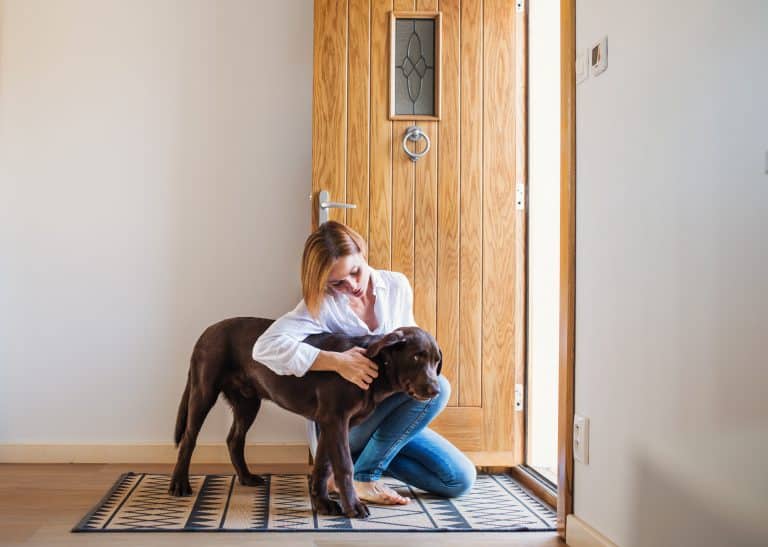
Everything happens for a reason, right? Dogs don’t develop new behaviors out of the blue. Something triggers them. Let’s look at a few possible causes of separation anxiety.
Change in Residence
Moving to a new house puts your dog in a strange, unfamiliar place. Your dog is expected to get comfortable in the new house, but he doesn’t understand that he’s there to stay. He might think he’s staying for only a couple days, so he follows you around because he’s uncomfortable. The new house doesn’t feel like “his space.” So, if you leave him home alone for a few hours, he may get anxious and worry that you won’t come back and he’ll be alone in the strange place forever.
Change in Household Membership
Maybe you adopted a kitty who isn’t too friendly towards friendly doggies. Your fur-baby wants to play with the little fluff ball but Mr. Fuzzy Boots doesn’t reciprocate and swats your pup’s nose. Now he doesn’t feel safe around said kitty so he stays by your side to protect himself from more hisses and swats.
Change in Schedule
If you’re normally a stay-at-home dog mom or dad and then get a job that requires you to leave your dog for long hours each day, your loving fur-baby might develop separation anxiety. He wonders where you go each day and might worry that you leave because of him. So, when you are home, he gives his best effort to stay glued to your side.
Change in Guardian/Caretaker
This is why so many rescued doggies have separation anxiety. Being abandoned, surrendered to a shelter, or given to a new guardian leaves a dog confused and feeling alone. When a new guardian takes him in and cares for him, he wants to be with you at all times because he knows you will give him the care and love he needs. And he doesn’t want to lose that again!
Medical Problems to Rule Out Before Declaring Separation Anxiety
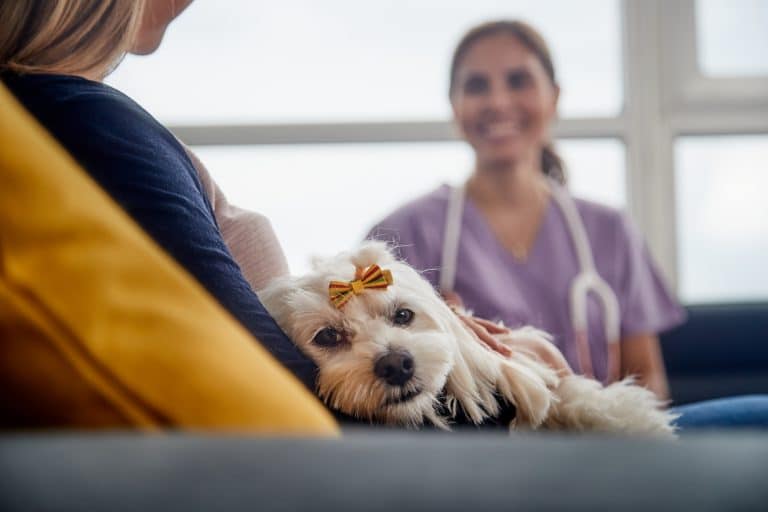
Some symptoms can look like multiple issues. For example, urinating in the house when you’re not home could look like separation anxiety. But it could also be a Urinary Tract Infection (UTI). The best way to rule out these issues is to visit your veterinarian and discuss the symptoms you’ve seen.
What else might cause symptoms that look like separation anxiety?
Incontinence Caused by Medical Issues
Your fur-baby could be suffering from a UTI, but your dog could also have a weak sphincter caused by old age, kidney disease, diabetes, bladder stones, hormone-related problems after spay/neuter surgery, Cushing’s disease, neurological problems, or abnormalities of the genitalia.
Medications
According to the ASPCA, there are a number of medications that can cause incontinence issues or extreme thirst. If your dog takes any medications, speak with your veterinarian about the symptoms your dog exhibits.
Non-Medical Issues to Rule Out Before Declaring Separation Anxiety
Not all symptoms are medical-related. This can make it more difficult to determine whether or not your dog has separation anxiety. Before coming to a conclusion, you should rule out the following behavioral issues:
Submission Urination or Excitement Urination
Years ago, I fostered a lovable Golden Retriever who would piddle on people’s shoes when she greeted them. Like clockwork. She got excited when someone walked in the house and just like that, she would squat for a second and before you know it, your shoe was wet.
I also had a German Shepherd who had the bad habit of jumping on people when they walked in the house. He was very excited to greet them, but the behavior was rude. So, we trained him to not jump by holding our hand in front of his face and verbalizing a stern “NO” when he jumped. The correction started him and he dribbled a little the first few times we used this training method.
The first example is excitement urination. It’s a behavior that is embarrassing, inconvenient, and messy.
The second example is submission urination. It’s also embarrassing, inconvenient, and messy.
Both behaviors can be dealt with. But they’re also similar to separation anxiety symptoms.
Incomplete House Training
Occasional urination or defecation in the house could be a result of an improperly house-trained dog. Maybe your dog knows he’s supposed to do his business outside but he doesn’t know how to ask to be taken outside. He might wait for you to “know” when to take him outside. But if you leave him home alone for a few hours and he has to go out, he might go in the house because he doesn’t know any better.
In other cases, a dog’s house training may have involved some punishment that made him afraid to do his business while is guardian is watching or standing nearby. If your dog is a rescue, this may be difficult to determine. The best remedy is to choose a command such as “potty” and use lots of encouragement to teach your dog to eliminate outside.
Urine Making
Some dogs urinate small amounts on vertical surfaces to mark their territory or presence. If you come home to these markings, your dog may not have separation anxiety. He may just be territorial.
Juvenile Chewing
It’s normal for young dogs to chew. Their teeth are growing and chewing relieves any pain they might have. They simply want to explore the world and since dogs don’t have opposable thumbs, they use their mouths to explore their surroundings. Chewing on objects when you’re not home may just be exploration of his home while he’s not under the watchful eye of his master.
Boredom
Dogs rely on their humans for everything: food, water, medical attention, exercise, and entertainment. You need to provide your dog with toys and activities to keep his brain active and occupied. Without that, your dog may become bored and develop bad behaviors which he exhibits when you’re not home. Chewing, pacing, digging, and escaping could be signs of severe boredom.
Excessive Barking, Howling, and Whimpering
Vocalization from dogs is always caused by a trigger. In separation anxiety, that trigger is you leaving. Other than separation anxiety, a dog might bark excessively at animals, other sights, or sounds. Is there a neighbor dog that your pup likes to bark at? Maybe the back yard is full of squirrels that are on “his territory.” Any number of things could trigger excessive barking and howling.
How To Find Your Dog’s Threshold For Separation

Essentially, you have to watch your dog’s body language. He can probably sense when you’re getting ready to leave the house. You put your shoes on, you gather your purse, or maybe you put your pup in his crate. Humans are creatures of habit so you probably do the same thing every time you leave the house, maybe without realizing it.
What is your dog’s body language as you’re getting ready to leave?
If he’s completely relaxed and comfortable:
- Soft eyes
- Droopy or loose ears
- Sitting or lying down
- Ignoring your actions
If he’s nervous but holding it together:
- Following you around
- Watching your actions
- Larger, harder eyes
- Possible white of eyes showing
- Tense muscles
If he’s freaking out:
- Bark or whining
- Trembling or shaking
- Chewing or digging
- Pacing and panting
- Lip licking
- Reduction in size (meaning he curls up and makes himself as small as possible)
Watch your dog closely. At what point does he show signs of freaking out? What are you doing at that exact moment that pushes him over the threshold?
Once you figure that out, you can make him more comfortable before that tipping point. Teach him that your actions should evoke calm and not panic.
There are things you can do to reduce his anxiety before and after you leave the house. For example, provide him with interactive treat-dispensing toys that keep his attention and give him a reward. You can also seek help from a professional dog trainer who knows many tips and tricks to calm your nervous fur-baby.
What You Should Do If Your Dog Has Separation Anxiety
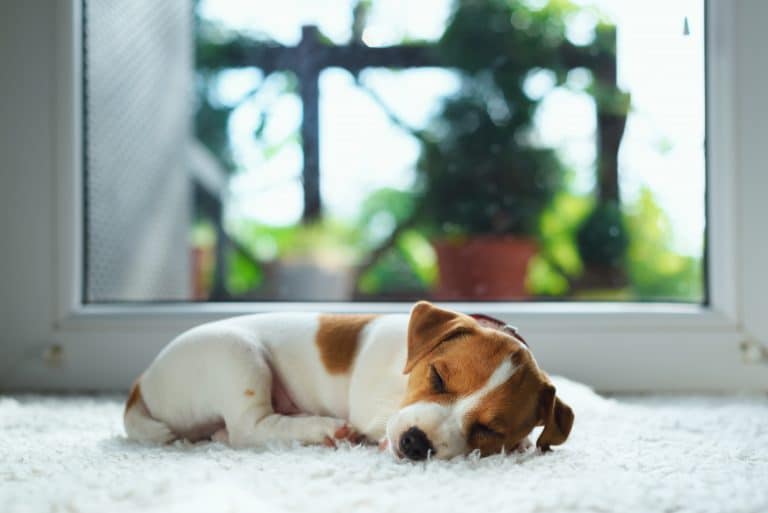
Different levels of separation anxiety require different methods of remedying the issue.
Treatment for Mild Separation Anxiety
For mild separation anxiety, counterconditioning might reduce or completely resolve the issue. Counterconditioning is defined as “a treatment process that changes an animal’s fearful, anxious, or aggressive reaction to a pleasant, relaxed one instead. It’s done by associating the sight or presence of a feared or disliked person, animal, place, object or situation with something really good, something the dog loves. Over time, the dog learns that whatever he fears actually predicts good things for him,” according to the ASPCA.
Essentially, you’re training your dog to enjoy your lack of presence.
How do you do this?
I’ve found that filling a Kong toy with yummy food, freezing it, and then giving it to my pup when I leave home works well. She’s learning that when I leave, she gets one of her favorite snacks. And the fact that it’s frozen keeps her busy for over an hour!
Healthy, yummy food for toys can include: low-fat cream cheese, spray cheese, low-fat peanut butter, frozen banana slices, cottage cheese, canned dog food, or kibble.
Be sure to remove these toys and snacks when you return home. Only give him these toys and snacks when you leave so that he associates the tasty treat with being alone and nothing else.
Treatment for Moderate to Severe Separation Anxiety
Moderate to severe separation anxiety requires more complex treatment plans and counterconditioning. You have to take smaller steps to gradually accustom your dog to being alone.
Start with short separations that produce little to no anxiety. I’m talking 15 minutes of alone time. Do this daily until your dog realizes that you come home soon.
Over weeks of daily work, you’ll be able to leave your dog home alone for longer amounts of time.
The ASPCA developed a desensitization and counterconditioning program for dogs with moderate to severe separation anxiety.
Crate Training to Avoid or Alleviate Separation Anxiety in Dogs
If possible, crate train your puppy while he’s a puppy. The earlier a dog learns to love his crate, the better the results.
If your dog is 6 months to 1 year or older, crate training can cause anxiety but he can learn to be at peace with it.
To crate train for the purpose of reducing separation anxiety, first you have to monitor your dog’s comfort (or lack thereof) in a crate while you’re home. If he’s comfortable in crate with a blanket and a toy, that’s perfect! Fill a toy with snacks, freeze it, and give it to your pup in the crate when he’s alone. He will learn that’s a safe place where he gets yummy treats.
If your dog shows signs of distress in the crate (heavy panting, excessive salivation, frantic attempts to escape, persistent howling or barking), crate confinement is not a good idea to reduce separation anxiety. Instead, try confining your nervous pup to one room. A baby gate may be enough. But if he jumps over it, closing the door may be necessary.
Give Your Dog “Jobs” and Activities
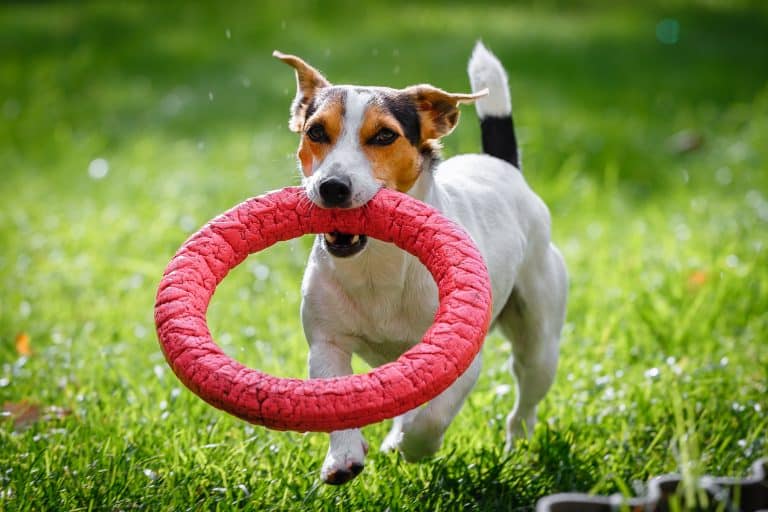
Dogs rely on their humans for all activities and exercises. Dogs don’t comprehend that they should go outside and run laps the way humans do. What you need to do is make a daily effort to exercise your dog. He needs to burn energy for at least 30 minutes every day.
To alleviate separation anxiety, exercise your dog right before you leave him alone. If you do this, he will be tired and maybe too tired to raise a fuss. Your dog is more likely to lay down and rest while you’re gone.
You can involve your dog in other games like fetch, swimming, tug-of-war, or frisbee.
Even an activity as simple as walking can burn enough energy to calm your pup’s anxiety. At least 30 minutes of walking every day can be beneficial in many different ways. It burns energy, it’s a low-impact workout, it’s good for older dogs with aging joints, and it boost cardiovascular health.
If your dog plays well with other dogs, let him romp with a friend or two.
Puzzle toys, treat-dispensing toys, and interactive toys make your dog focus on the activity and retrieving the treat instead of focusing on the fact that he’s alone.
If Nothing Else, Medications Might Be Necessary
If nothing else works to subdue your fur-baby’s separation anxiety, you may need to consult your veterinarian to find a suitable medication that will calm his nerves while he’s alone.
Medication can be quite helpful, especially if your pup exhibits severe anxiety symptoms. Some dogs are just that distraught when their human is gone that medication is the only solution. There’s no shame in that!
In mild anxiety situations, a dog may become accustomed to being left alone through the help of the medication and retain the new conditioning after being weaned off the drug. Most dogs, though, need a combination of behavior modification and medication.
How To Prevent Separation Anxiety in Dogs?
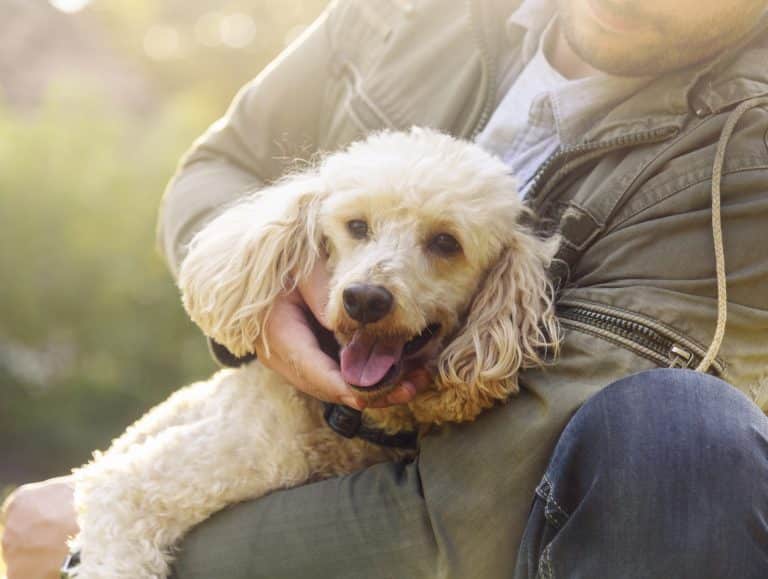
There are a few things you can do to prevent episodes of separation anxiety.
Ignore Your Dog’s Attention-Seeking Behaviors
Dogs are constantly looking for attention. They’ll do anything to get attention. That includes doing something bad that will get them negative attention. That’s right – dogs enjoy being scolded. (Yes, my eyes are rolling, too)
So, when your dog follows you around the house or cries when you get ready to leave the house, ignore those behaviors. He’s looking for attention because he doesn’t want you to leave. If you don’t give into his request, he will eventually learn that performing that behavior doesn’t get him what he wants. And he’ll stop doing it.
Avoid Major Episodes
Don’t let your dog follow you to the door as you leave the house. Instead, put him in his crate or an enclosed room with a favorite toy. Give him that frozen Kong toy full of peanut butter, kibble, and canned food. Put his in his place before you begin to get ready to leave the house.
If he’s occupied with that toy, he won’t be focused on your departure or your preparation to depart.
Use Positive Crate Time
By putting your dog in his crate for 15 or 30 minutes each day with a favorite activity, he’s learning that crate time is a good thing. Once he’s confident in his crate, you can utilize the crate when he’s alone. It could help reduce his separation anxiety.
Treat-Filled Toys for a Positive Experience
Again, that food-stuffed frozen Kong (or similar toy) can go a long way. Stuff it with healthy, yummy snacks, freeze it, and give it to your pup (only) when you’re away from home. He’ll learn that your absence means he gets delicious snacks.
Avoid Emotional Hellos and Goodbyes
Don’t get emotional when you leave the house or when you come home. By getting excited, you could reinforce your dog’s fear of your absence. He can’t understand the words you’re saying but he feels your emotions. When you leave, he thinks you’ll never come back because your goodbye was so emotional.
Exercise Right Before Departure
A tired dog is a calm dog. It’s a rule I live by. Exercise your dog for at least 30 minutes before you leave. If you do that, he’ll be tired and he’ll relax and hopefully sleep while you’re gone.
Keep in mind, exercise means walking, running, fetch, tug-of-war, frisbee, or romping with canine friends. Exercise does not count as chewing on a bone. That won’t tire him out.
Train Your Dog To Be Alone…With You
Yep, figure this one out! Have your pup stay in one room of the house while you’re in another room of the house. Start with 5 or 10-second separations and work your way up to 20 or 30 minutes.
What NOT To Do
Some actions will only make separation anxiety worse for your pup.
Scold or Punish
Anxious behaviors are not a result of disobedience or spite. They’re responses to stress. Your dog is attempting to cope with the stress of being alone. Scolding stress behaviors only raise the dog’s stress level and worsens the problem.
Summary
Separation anxiety can be a difficult issue to deal with, depending on the individual dog. The issue can be dealt with. In some cases, you may need to “guess and check” which method works for your dog. Find what works and stick with it.
Does your dog show signs of separation anxiety? Are you already treating his or her anxiety? What are your methods? What are the symptoms?
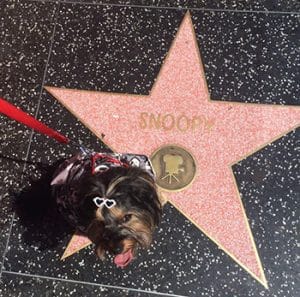
One Request From Speedy
Kelly Siedhof put so much effort writing this blog post to provide value to the dog parent community. It’ll be very helpful for me, if you consider sharing it on social media networks.
SHARING IS ♥️

